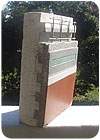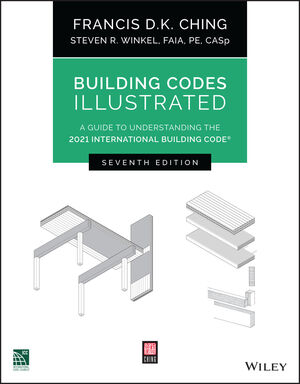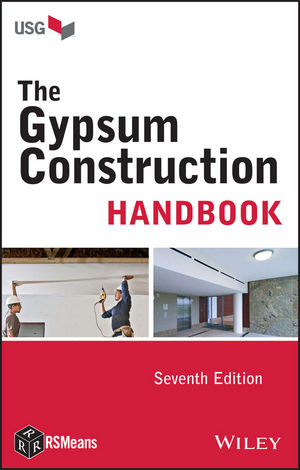
What is EIFS? This is not a dumb question. It has lots of implications and there are many opinions about what EIFS is. No doubt many contractors have gotten into some ripe discussions when someone who doesn’t know the product very well tries to tell you that a certain wall system is EIFS, when it clearly is not.
Depending on your definition of EIFS, including such issues as how it is being designed, used or installed, many a so-called EIFS may not even be an EIFS by any mainstream understanding of what EIFS is. Hence, opportunities for business and construction confrontations abound. The definition of EIFS can affect cost, profits, bidding, insurance and even legal issues, such as code compliance.
At a recent technical meeting I attended, a discussion occurred about how to define EIFS. Some new EIFS producers wanted some technical work done by a well-known technical society on a product that is sort-of-like EIFS. This prompted a lot of discussion as to whether or not this technical group should even handle the request.

Don’t be confused! This wall section is not EIFS, even thought it contains EPS foam, a “mortar” layer with EPS beads in it, metal reinforcing, a base coat, and additional coating layers.
RESIDENTIAL CONFUSION
Confusion about EIFS is especially prevalent in residential construction and when buying, selling and insuring property. For instance, some real estate offices will not even handle homes with EIFS on them, even if it is a small percentage of the facade. This column will explore the root issues of this question and will help contractors in their work to discuss the apparently simple question: “Is it EIFS?”First things first: EIFS are always outside of the main wall structure, never inside the main construction–unlike cavity insulation, that is, by definition, within the wall. Someone told me once that any exterior wall that has insulation in the wall is EIFS. Not so.
In some countries EIFS are called External Insulation Systems, meaning external to the main wall. External is actually a better word to use in the English language, but it still raises the question of what constitutes “external.” If the words “exterior” and “external” mean “outside of the main wall structure,” then a metal sandwich panel mounted outside of a block wall could be considered EIFS. So could foam insulation sheathing applied outboard of the studs, with vinyl siding over it. Clearly this is not what most people would think of when contemplating EIFS.
Outside of North America, there is a much more liberal definition of what constitutes EIFS. Essentially, in North America, it is rigid foam plastic boards with thin synthetic coatings. Not so elsewhere. In many other countries, all sorts of other insulation types and coating systems are considered to be EIFS.
In a sense, North American definition of EIFS is narrow, and its origins are a result of certain products initially proclaimed as EIFS in this market, various design factors (the use of foam shapes, for instance) and cost issues (such as labor-versus-material cost ratios). So don’t dismiss some never-seen-before nouveau EIFS as not being EIFS, because it may be.
EIFS: A PRODUCT?
Here’s a true story: I’ve received a number of email purchase orders over the years, wanting me (a technical consultant!) to ship them “2,000 square feet of EIFS.” Usually this type of “I have no clue” request comes from some well-meaning but ignorant functionary in the purchasing department of some huge international trading company that happens to Goggle onto my website, www.eifs.com. They think that EIFS is a product, but EIFS are systems. They do not come as a complete ready-to-use unit that is put in place, like a nail flange residential window. EIFS are created at the job site from a group of raw materials (or in a prefabricated panel factory). They can be created in countless variations, not to mention user-selected personal options like color and texture. So, there is no such thing as a “standard” EIFS. This versatility is one reason EIFS is popular.This flexibility of design has a big effect in determining at what point a particular system is not EIFS, or ever was EIFS. In effect, it’s easy to make hybrid quasi-EIFS systems that are not quite EIFS.
Consider the product pictured on this page, which is considered to be EIFS in some countries. Note the special EPS foam, the thick “mortar” layer with EPS beads in it, the metal reinforcing, the base coat, the extra coating layers, and so on. What should one call this product? I call it expensive. It is not any standard type of EIFS.
In North America, the most common, basic, definition of EIFS is: A multi-layer system consisting of a layer of foam plastic insulation applied over a continuous substrate, and over which is applied reinforced thin synthetic coatings. While there are many variations in EIFS designs, this is the definition of basic, standard EIFS.
THE DRAINAGE FACTOR
In the ‘90s, EIFS, when used on wood-framed buildings, became defined as needing to incorporate a water drainage system. This involved some sort of a drainage area behind the foam, and a protective barrier over the substrate. It was dubbed EIFS with Drainage. This is a clever definition, as EIFS with Drainage is nothing more, in essence, than a traditional EIFS with the drainage option added-on. The base EIFS product is the same; it just has additional features.Regardless of whether it is traditional EIFS, or EIFS with Drainage, the fact remains that it is external to the main wall, and thus is an EIFS. Thus the “drainage issue” is not a part of the basic definition of EIFS.
There are also many hybrid and complex systems, like wall claddings that are somewhat like EIFS. Examples include sophisticated “rain screen” and “pressure-equalized” designs. These are separate special systems like EIFS, yet they are not mainstream EIFS.
One of the key components of “real EIFS” is the presence of a discrete, single layer of only insulation. The word “only” means a material that is not anything other than insulation. There are EIFS-like systems that mix stucco with EPS foam beads in a sort-of EIFS “insulation layer.” Is this EIFS? I think it is insulated hybrid stucco. This is not to say that it is a bad product, but it is not EIFS in the North American sense.
Types of Insulation
In the North American market we have a narrow view of what is “EIFS insulation.” Almost all EIFS systems in North America use EPS (the so-called PB systems), but many other systems use extruded polystyrene, polyisocyanurate, spray-applied polyurethane or mineral wool. wool. There have even been attempts to make EIFS using fiberglass. Outside of North America, the definition of insulation is even more liberal, including insulation made of hay, FoamGlas (a low-density ceramic glass board, used mostly for furnace lining and to scrape clean the grill at hamburger joints), and even cork. The key to the definition of EIFS is not the type of insulation used, but that it is a discrete, uniform single-insulation material.A “true EIFS,” by North American standards, uses thin, reinforced synthetic coatings as the outer layer. The use of totally inorganic (stucco), thick (greater than about 3/8-inch) coatings is not considered to be an EIFS coating, at least in North America. Such systems are sometimes called “insulated stucco,” which is a more accurate description. The use of thick, inorganic coatings changes the performance of the outside surface, and thus affects the way the EIFS is designed and installed. An example would be a 1/2-inch of stucco-like plaster over foam. Such systems behave like stucco. Unlike EIFS, it is brittle and requires control joints.
Although an EIFS does not have a substrate as part of the EIFS product itself, a real EIFS always has a substrate as part of the overall wall assembly. It’s a little bit like saying that the concrete foundation is part of the structural steel package for a building frame. There is a connection, so to speak, but they are obviously not the same just because they touch each other.
There are types of so-called EIFS that do not have a substrate; a substrate being a continuous flat surface onto which the EIFS is applied. An example of a non-EIFS would be foam sheathing attached directly to studs with no substrate sheathing (such as OSB or a gypsum product).
THE ATTACHMENT SYSTEM
The attachment system is not part of the definition of an EIFS. There are many ways to get the insulation layer firmly connected to the wall structure. In other words, the way in which an EIFS is attached to a wall structure has little to do with whether it is an EIFS.
What constitutes a “viable EIFS” in a given market depends not only on what is in the EIFS itself, but also the local cost/dynamics of the construction market. For example, in countries where labor rates are low, EIFS lean toward systems that are more complex, use less expensive materials and are more labor intensive. Such is the case in Asia and other markets.
In North America, labor-intensive systems are not cost-effective, and hence the current EIFS–the common PB EIFS–are the mainstay. Some of the more sophisticated EIFS-like systems from abroad offer numerous attributes like higher performance and longevity, but at a higher cost. I think EIFS, with all its performance qualities, is underpriced for what one gets for the dollar, and I’d like to see EIFS used more often, especially on major buildings that need high performance.
To recap, in the North American market, EIFS is a discrete layer of insulation with a thin reinforced synthetic coating layer on top of it. This means that “stucco over foam” is not EIFS, nor is stucco with foam beads in it. The insulation material and the attachment methods are immaterial.
So, when some insurance or real estate person tells you that stucco with an acrylic EIFS finish as the final coat is EIFS, or stucco-over-foam is EIFS, tell them they do not know what they are talking about, and to read this article.



